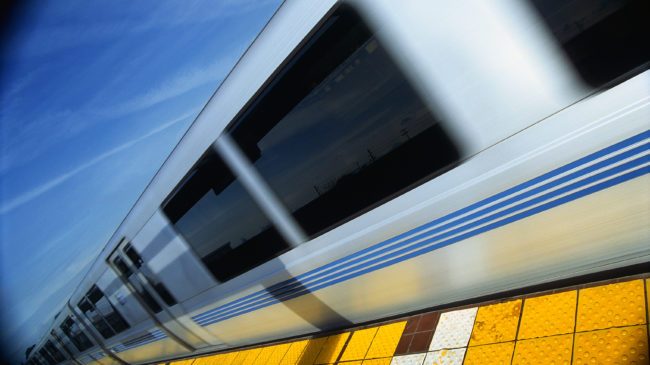Last year, Standard and Poor’s assigned BART general obligation bonds its top AAA rating, noting the system’s “exceptionally deep and very diverse regional economic base, prudent management, and consistently positive operating performance.” But none of these factors are likely to be enough to save the transit system from catastrophic revenue losses connected to the coronavirus pandemic and local governments’ reactions to it.
In the wake of seven counties in the Bay Area issuing a “shelter in place” order that covers BART’s entire service area, the agency faces steep declines in its two primary revenue sources: fares and sales taxes. While this lockdown remains in effect, ridership is expected to fall by up to 85 percent from normal levels.
In a March 17 press release, Bay Area Rapid Transit (BART) said, “A sustained ridership loss of 85 percent and a 50 percent reduction of economic activity impacting other revenue sources could reduce BART’s monthly revenues by $55 million.”
“This is a financial crisis for BART,” said BART Board President Lateefah Simon in the release. “This level of catastrophic revenue loss is not sustainable and threatens future service.”
These reductions in ridership add to a sustained pre-coronavirus decline I covered in a San Jose Mercury News op-ed. Between 2016 and 2019, BART’s weekday ridership fell five percent, while its Sunday utilization was down 26 percent from its 2014 peak.
It remains to be seen how long the Bay Area lockdown will persist, and, once normalcy returns, how many riders come back. Now that more Bay Area office workers and employers are getting acquainted with telecommuting, many weekday riders may be reluctant to return to their daily commutes. At the very least, we may see a sustained increase in the number of people able to work from home on Mondays and Fridays – if not during the middle of the week.
BART’s weekend ridership has been sinking due to a variety of factors, including safety and cleanliness concerns, competition from ridesharing apps, and BART’s own construction-related service reductions. Again, the question is how many riders will have formed other transportation habits once normal conditions return.
The system has an opportunity to gain riders through a series of planned extensions into the city of San Jose, but these projects have suffered repeated delays that may be exacerbated by the current COVID-19 public health emergency.
Ridership isn’t BART’s only problem. Its second biggest revenue source is a local sales tax. Passenger revenue and sales tax proceeds were expected to supply 51 percent and 29 percent, respectively, of the system’s budgeted revenue in the current fiscal year.
BART receives 0.5 percent of taxable sales in Alameda County, Contra Costa County and the city and county of San Francisco. But with a decrease in economic activity in the Bay Area, including restaurant dining and discretionary shopping, during the coronavirus emergency, tax receipts should decline precipitously.
To the extent that Bay Area purchases shift from local businesses to Amazon.com and other online merchants that collect state and local sales taxes, some of this revenue should be retained. How much sales tax revenue is recaptured this way remains to be seen and an overall decrease in tax revenues seems likely.
BART’s reduced revenue must be allocated across a largely fixed expense base. Layoffs or furloughs seem unlikely as BART strives to maintain full service, providing the excess capacity needed for social distancing on trains. Nor will pension and other post-employment obligations be impacted. The system’s 2020 budget includes $126 million of pension contributions and $42 million in other post employment benefit expenses, totaling almost 18 percent of BART’s budgeted operating revenue.
A catastrophic decline in revenue could set up a competition between labor expenditures (including retirement costs) and the system’s debt service, budgeted at $47 million. Under the current economic circumstances, maintaining a general obligation rating of AAA seems unsustainable.
BART and other transit systems may be temporarily saved by emergency funding from federal, state or local governments. The most likely prospect would seem to be at the federal level, where the the federal government has repeatedly demonstrated its willingness to run operating deficits. The Trump administration is currently proposing more than $1 trillion of coronavirus-related stimulus and bailout spending. And since the Bay Area is represented in part by powerful House Speaker Nancy Pelosi, an emergency federal subsidy for BART may end up being a part of the next round of stimulus bills being put together. Grim as it may be, if the shelter-in-place order is not lifted soon, BART may be left hoping for federal support in order to keep its bond rating intact and help it avoid service cuts.

